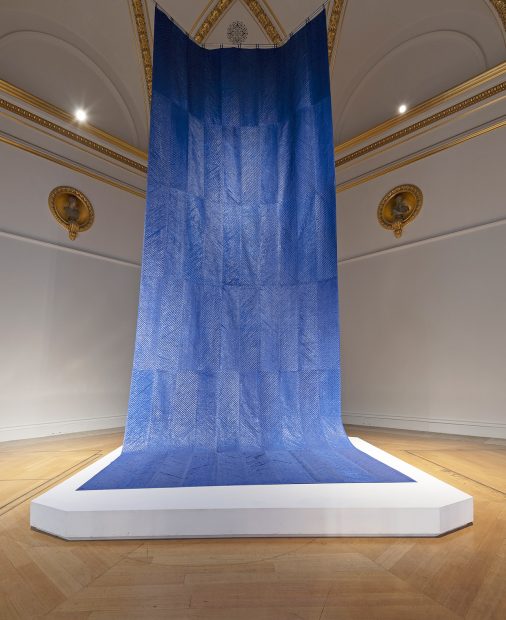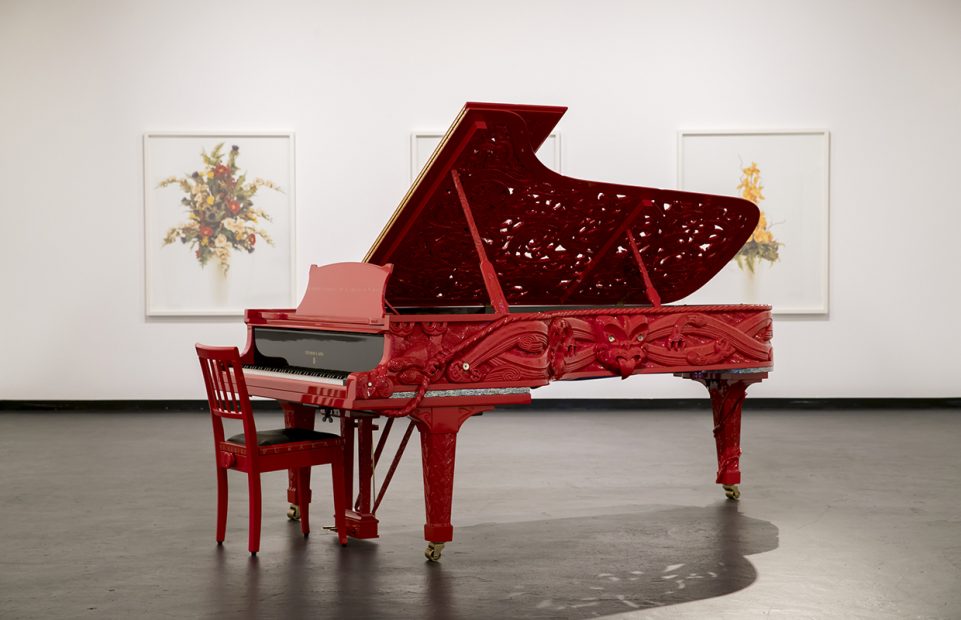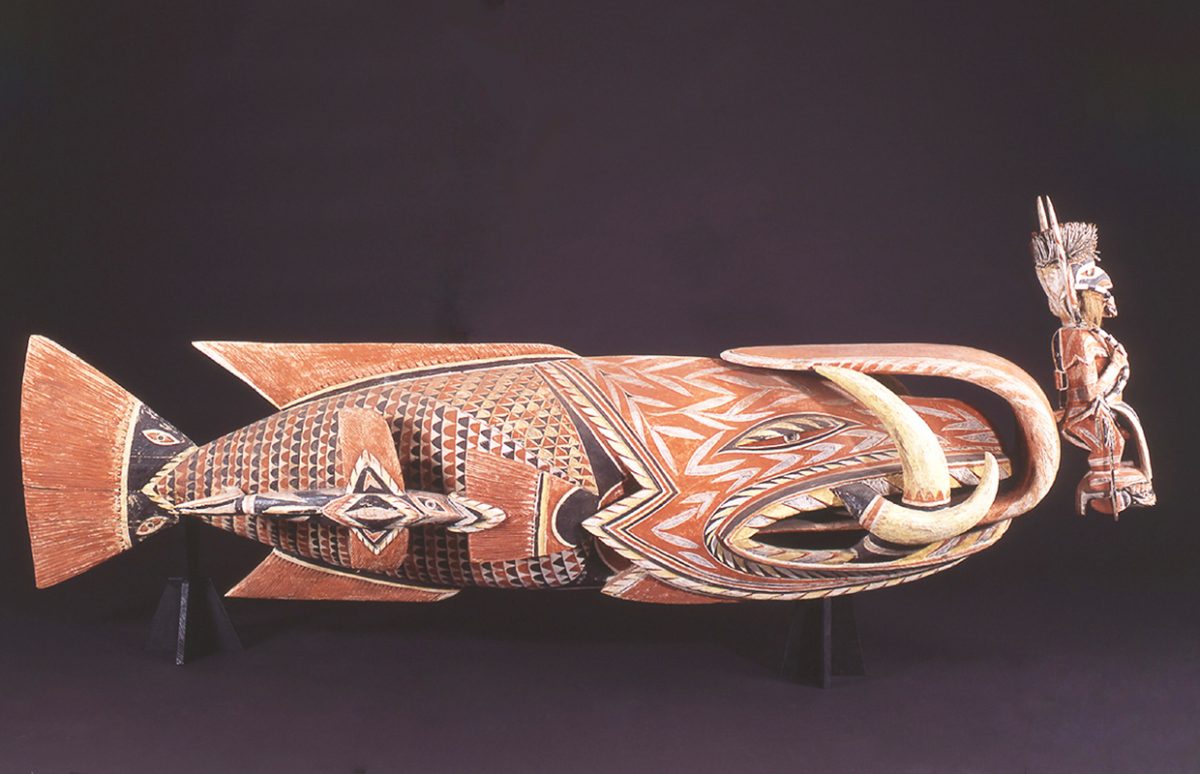A new exhibition at the Musée Quai Branly-Jacques Chirac explores the vast continent of Oceania, where water is omnipresent in real and metaphorical senses.
The exhibition was originated at the Royal Academy in London to commemorate the journeys of James Cook in search of a mythical southern continent in the late Eighteenth Century. Cook never found the inexistent land mass geographers believed must exist to balance the globe.
What Cook and his crew encountered on arrival was a vast number of island civilisations covering almost a third of the world’s surface: from Tahiti in Polynesia, to the scattered archipelagos and islands of Melanesia and Micronesia.
The exhibition includes unique historic artefacts from museums collections but also work by contemporary Oceanian artists around the themes of meetings, memories, past and future.
Oceania: exhibition trailer from Royal Academy of Arts on Vimeo.
The exhibition opens with a section on journeys. From 8000 BC till 1300 AD, skilled South Asian navigators explored the South Pacific and made its islands their homes. Common origins mean there are similarities in the languages and lifestyle of the different islanders but isolation and specific geographical conditions meant that each adapted and adopted its own specific characteristics.
The exhibition is full of artefacts from across the region — often examples of indigenous cultures that Europeans collected, while trying to replace the cultures that created them with Christianity and “civilisation”.
Past, Present and Future
The exhibit isn’t only facing towards the past. It also features many works by contemporary artists from Oceania. A monumental blue "wave" marks the entrance of the exhibition. It is made using a traditional Maori weaving technique but it is woven from blue plastic tarpaulins which are omnipresent in Maori communities. The collective who created it share their stories and experience on the exhibition site.

A magnificently carved piano again confronts indigenous and colonial culture, referring to Jane Campion’s film The Piano (1993) based on a classic New Zealand novel where the clash of cultures is exemplified by European missionaries trying to transport a grand piano to a. inaccessible place with a totally inappropriate climate for the sensitive instrument.
The work, by Michael Parekowhai, is entitled He Korero Purakau mo Te Awanui o Te Motu: story of a New Zealand river.
The piano, symbol of European civilisation, has been transformed in turn with the technique Maori use for the canoes or wake that transported them thousands of miles over the Pacific.

In a video installation, another Maori artist, Lisa Reihana, reinvents a 19th century European representation of exotic Oceania: French artist Jean Gabriel Charvet’s panoramic wallpaper entitled The Savages of the Pacific Sea. Reihana's work, In Pursuit of Venus (Infected), pictures Captain Cook’s expedition’s encounters with different Pacific peoples. Cook’s expedition was ostensibly a scientific mission to observe the planet Venus. Reihana reimagines the meetings of cultures from the point of view of the peoples of Oceania. Less romantic idyll and more colonial nightmare, with the arrival of infectious diseases brought by the Europeans which decimated local populations.
![in Pursuit of Venus [infected], 2015–2017, Lisa Reihana,](http://www.speakeasy-news.com/wp-content/uploads/2019/04/SN_oceania_int02-465x620.jpg)
Tell them
we don’t want to leave
we’ve never wanted to leave
and that we
are nothing without our islands.
Océanie
Musée du quai Branly Jacques Chirac
Till 7 July
See our webpicks for some excellent videos exploring
works and themes from the exhibition.
Copyright(s) :
Kiko Moana, Nouvelle Zélande 2017,
Polyéthylène et fil de coton, 4 × 11 m
© Collectif Mata Aho
© Royal Academy of Arts, London
photo Marcus J. Leith
He Kurero Parakau mo Te Awanui o Te Motu: story
of a New Zealand River,
Michael Parekowhai, 2011, Piano : bois, ivoire,
laiton, laque, acier, ébène, coquille de paua,
nacre, garniture, 103 × 275 × 1745 cm (piano),
85,5 × 46 × 41 cm (siège)
© Michael Parekowhai © Wellington,
collection du Museum of New Zealand Te Papa
Tongarewa
in Pursuit of Venus [infected], 2015–2017,
Lisa Reihana, Vidéo monovoie, Ultra HD,
couleur, son 7.1, 64 minutes,
Nouvelle-Zélande
© Image courtesy of the artist
and ARTPROJECTS
Tag(s) : "art" "Australia" "climate change" "colonisation" "cultural appropriation" "exhibition" "exploration" "James Cook" "Maori" "Marshall Islands" "migration" "New Zealand" "ocean" "Oceania" "Polynesia" "tattoos"





